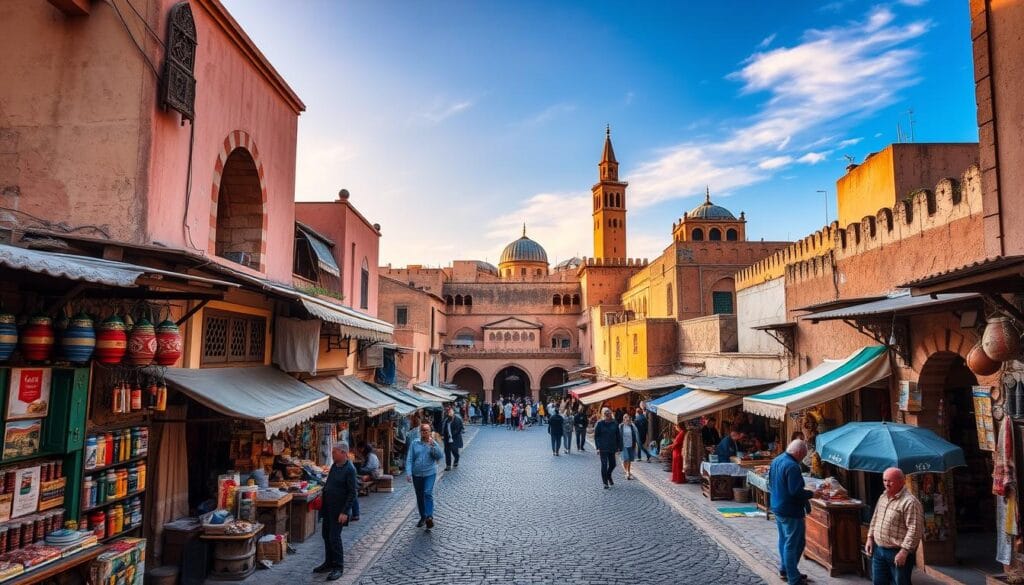
Welcome to Fes, Morocco’s spiritual and cultural heart, where ancient traditions blend seamlessly with vibrant modern life. As you step into this historic city, you’ll be immersed in a world that’s been shaped by over 1,200 years of history.
Founded in the 9th century, Fes quickly became a center of Islamic learning and culture. Today, it’s a UNESCO World Heritage Site and one of the largest car-free urban areas in the world. As you travel through its labyrinthine medina, you’ll discover why Fes stands apart as one of North Africa’s most fascinating destinations.
For a personalized experience in this remarkable city, consider reaching out to Explore Morocco at exploremorocco.net or 0681223860.
Table of Contents
Discovering the Ancient City of Fes
As you step into the ancient city of Fes, you’re immediately transported to a world of rich history and culture. Founded in the 9th century by Idris I, Fes quickly became a center of Islamic learning and culture, evolving into a major hub of prosperity and influence during the medieval age.
The Historical Significance of Fes
Fes is not just any city; it’s the oldest in Morocco, boasting an ancient walled district with thousands of winding alleys. The medieval Medina, known as Fes el Bali, is one of the best-preserved old towns in the Arab-Muslim world and is listed as a World Heritage Site. Its walls have protected its cultural treasures for centuries, creating a time capsule of Islamic architecture and traditional craftsmanship.
Over time, Fes has maintained its importance as a spiritual and cultural center. Its historical significance is multifaceted, reflecting various periods of Moroccan history, from the original Arab settlement to later Andalusian influences.
Why Fes Should Be on Your Morocco Itinerary
Fes offers a more authentic and less commercialized experience compared to other Moroccan cities. As you explore different parts of the city, you’ll uncover its fascinating origins, understand its golden age during the 13th and 14th centuries, and appreciate its strategic importance as a crossroads for trade routes.
Visiting Fes is like stepping into a living museum, where history comes alive through its architecture, culture, and people. It’s an essential stop on any Morocco itinerary, providing a unique blend of the past and present.
Explore the UNESCO-Listed Medina of Fes el Bali
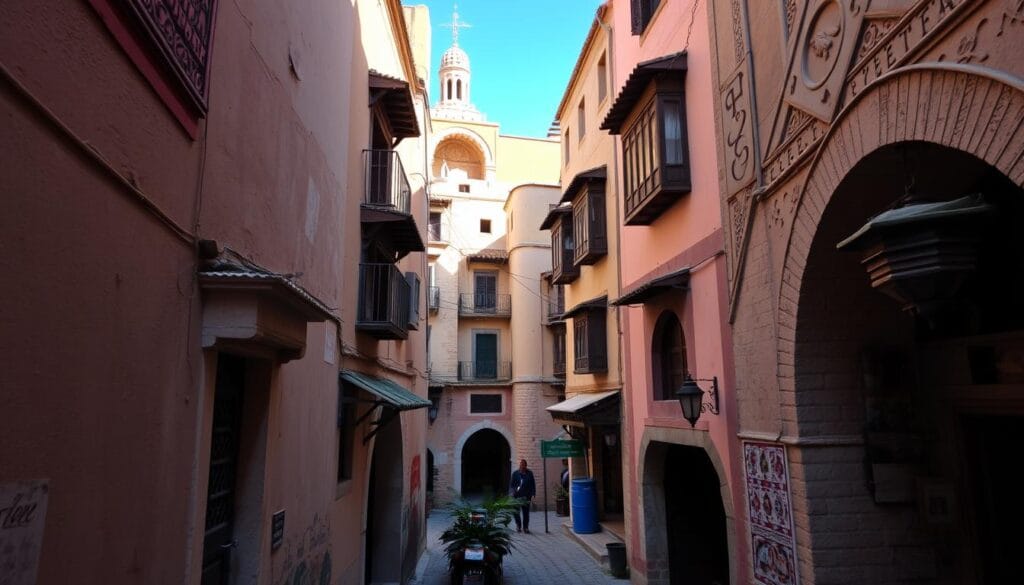
As you step into the Medina of Fes el Bali, you’re immediately immersed in a world that’s both ancient and alive. This UNESCO World Heritage site is a medieval labyrinth of over 9,000 narrow winding alleys and 4,000 dead-ends, making it the largest car-free urban area in the world.
Navigating the 9,000 Winding Alleys
The Medina’s incredible maze can be daunting, but it’s also what makes it so charming. As you wander through the streets, you’ll discover different quarters dedicated to specific crafts, religious buildings, and commercial activities. The traditional organization of the medina is a testament to the city’s rich history and cultural heritage.
You’ll need to be prepared to dodge people and donkeys used by traders to transport goods. The traders often shout “Balak,” which means “move out of the way.” Getting lost in the medina is inevitable, but it’s also one of the best ways to experience it.
Tips for Not Getting Lost in the World’s Largest Car-Free Urban Area
To make the most of your time in the medina, consider hiring a local guide initially to navigate the main points of interest. This will give you a deeper understanding of the area and help you get familiar with the layout. As you explore, take note of landmarks and learn a few key phrases to interact with the local people.
By being mindful of your surroundings and respecting the local culture, you’ll be able to navigate the medina with ease and enjoy the vibrant atmosphere. Whether you’re on a guided tour or exploring independently, the Medina of Fes el Bali is an unforgettable experience.
Visit the Iconic Chouara Tannery
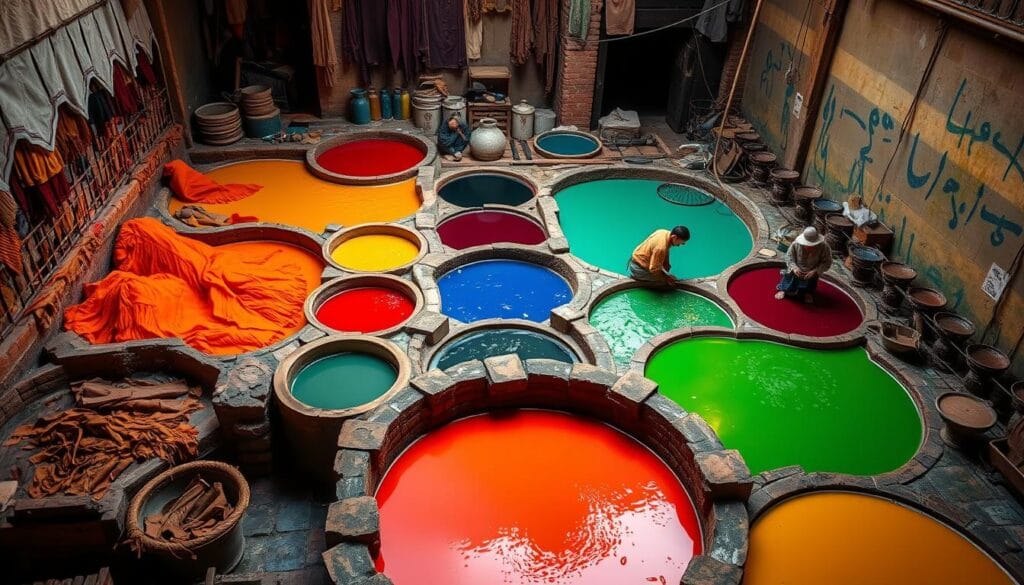
As you wander through the ancient alleys of Fes, a visit to the Chouara Tannery is an unmissable experience. The Chouara Tannery is one of Fes’s most iconic attractions and among the oldest continuously operating leather tanneries in the world.
Understanding the Ancient Leather-Making Process
The Chouara Tannery uses the same system to dye leather today as it did 1000 years ago. The traditional leather-making process involves natural materials like lime, pigeon droppings, and plant-based dyes. This ancient craft has remained largely unchanged, offering a fascinating glimpse into the past.
Best Viewpoints and How to Handle the Smell
To witness the tanneries in action, you need to walk through one of the leather shops. Each shop has a terrace with a different vantage point; Shop 10 and Shop No. 64 are particularly recommended for their good views of the tannery. Upon approaching the tannery, you’ll be provided with fresh mint to help alleviate the notorious smell.
Visiting the Chouara Tannery is a unique experience that allows you to appreciate a living historical craft. By understanding the process and seeing it firsthand, you can gain a deeper appreciation for the leather products you see throughout Morocco.
Marvel at the Bou Inania Madrasa
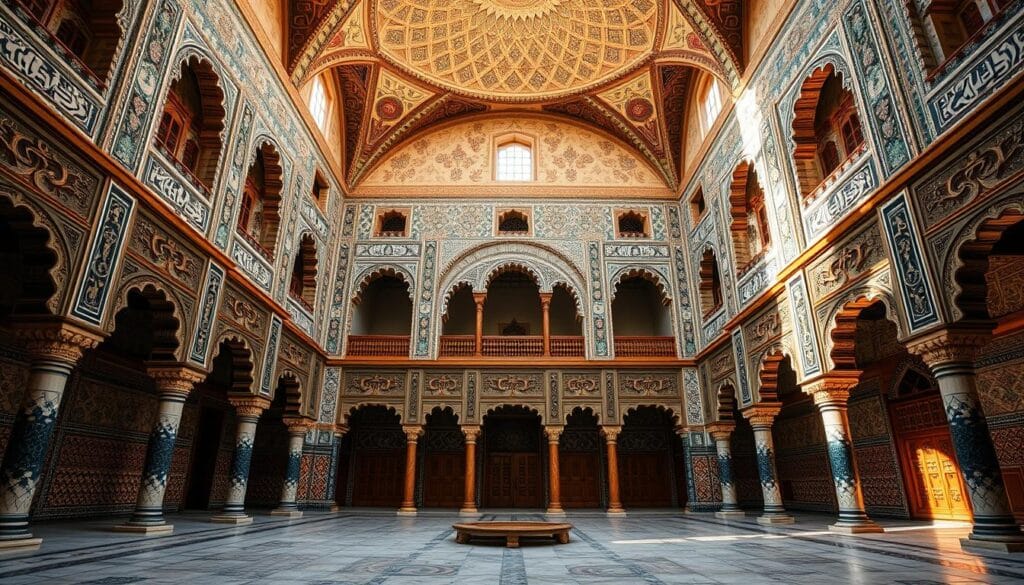
As you wander through the ancient alleys of Fes, you’ll encounter one of the city’s most breathtaking architectural gems: the Bou Inania Madrasa. This 14th-century school for Islamic studies is renowned for its ornate tilework, dramatic architecture, and historical significance.
The Architectural Beauty of the 14th Century School
The Bou Inania Madrasa is considered the finest example of Marinid architecture in Fes, showcasing intricate cedar wood carvings, elaborate stucco work, and colorful zellij tilework that adorn the courtyard. The madrasa’s design reflects Islamic principles of geometry, symmetry, and spiritual contemplation, making it a unique and fascinating place to explore.
Practical Information for Visitors
To make the most of your visit, plan to arrive at the entrance early in the morning (9 AM) or later in the afternoon (after 4 PM) to avoid the crowds that gather during the day. The time of day can significantly impact your experience, allowing for a more serene and contemplative visit. The entry fee is 30 dirhams per person.
By visiting the Bou Inania Madrasa, you’ll gain a deeper understanding of Fes’s rich cultural heritage and the importance of this 14th-century landmark. As one of the few religious buildings in Fes that allows non-Muslim visitors, the Bou Inania Madrasa offers a unique glimpse into the city’s spiritual and educational history.
Enter Through the Famous Blue Gate (Bab Boujloud)
Your journey into the heart of Fes’s ancient medina begins at the breathtaking Blue Gate, Bab Boujloud. This iconic landmark is not only a masterpiece of Moroccan craftsmanship but also serves as the main entrance to the medina. As you approach the gate, you’re immediately struck by its vibrant colors and intricate tile work.
The History Behind the Colorful Entrance
The Blue Gate was built in 1913 by the French colonial administration, yet it is designed in a traditional Moroccan style. The outer facade is adorned with blue tiles, while the inner facade features green tiles, symbolizing the color of Fes. This dual-color scheme makes the gate a unique and fascinating landmark.
Surrounding Cafes and Restaurants
The area around the Blue Gate is bustling with activity, offering numerous cafes and restaurants where you can enjoy authentic Moroccan food. These establishments provide perfect vantage points to observe daily life in the medina. As the gate is illuminated in the evening, it becomes one of Fes’s most photogenic scenes, making it an ideal spot to soak in the atmosphere and enjoy local cuisine.
Discover Al-Qarawiyyin – The World’s Oldest University
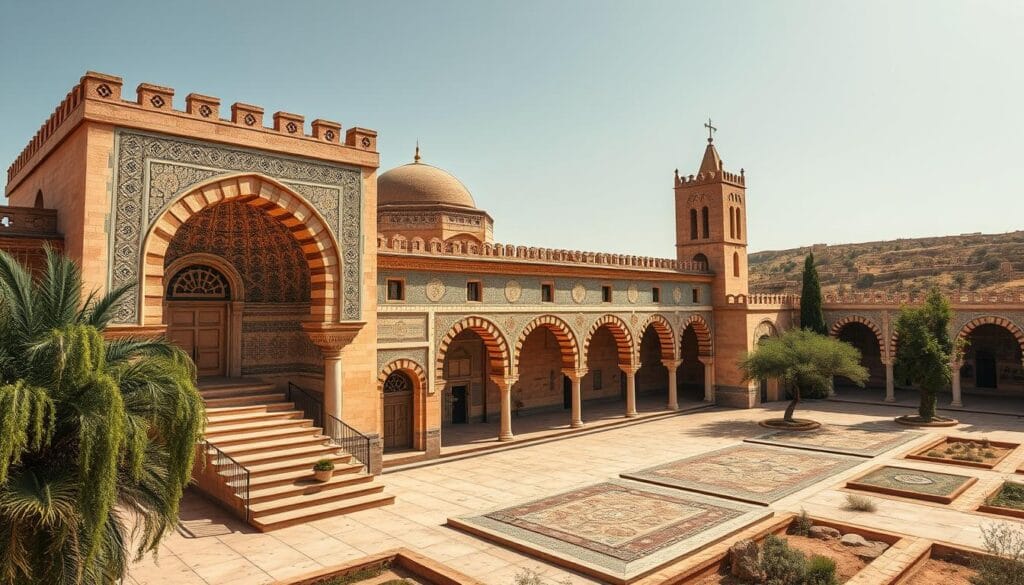
Founded in 859 CE by Fatima al-Fihri, Al-Qarawiyyin is recognized as the world’s oldest continuously operating university. This historic institution has been a center of learning for over 1,200 years, attracting scholars from across the Islamic world and beyond.
The Historical Importance of This 9th Century Institution
Al-Qarawiyyin University was initially a mosque before it evolved into a prestigious place of learning. It is regarded by UNESCO and Guinness World Records as the oldest existing and continually operating university in the world. The university’s historical significance extends to its influence on European universities and its role in preserving Islamic scholarship.
The institution’s library houses some of the world’s most valuable Islamic manuscripts, including works dating back to the 9th century. This makes it a significant place for historical research and learning.
What Non-Muslims Can See
Although the interior of Al-Qarawiyyin is restricted to Muslims, tourists can still appreciate its beauty from the outside. By glimpsing through the entrance gates, visitors can see the stunning marble courtyard, fountains, arches, tiles, and carvings. You can observe people praying in this holy building, which still operates as a university, giving you a glimpse into its ongoing importance as a place of worship and education.
Visiting Al-Qarawiyyin provides a unique opportunity to appreciate its historical and architectural significance while respecting its active religious status. It’s a moment to understand the time and effort that has gone into preserving this ancient university over the centuries.
Wander Down Rainbow Street
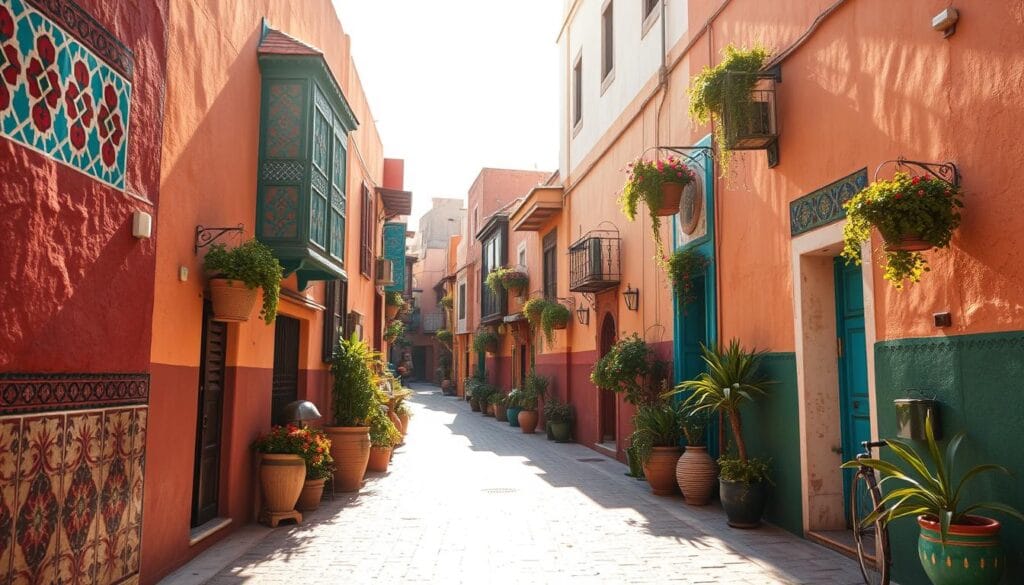
As you step into the vibrant medina of Fes, one of the most striking experiences awaits you on Rainbow Street. This narrow alleyway is aptly named for its explosion of colors, creating a feast for the eyes with its vibrant mosaics, paintings, rugs, and rainbow-hued artworks.
Vibrant Colors and Artisan Shops
Rainbow Street is lined with shops showcasing traditional Moroccan arts with a contemporary twist. Local artisans display their craftsmanship through handwoven textiles, colorful pottery, and other unique creations. As you explore this street, you’ll discover why it’s considered one of the best things to do in Fes.
Photography Tips for This Colorful Alley
To capture the best images of Rainbow Street, consider visiting early in the morning or late in the afternoon to avoid the crowds that gather during the day. The soft light during these times enhances the colors and makes for great photography opportunities. Be sure to wear sturdy shoes as the street can get grimy.
Admire the Royal Palace Doors (Dar el Makhzen)
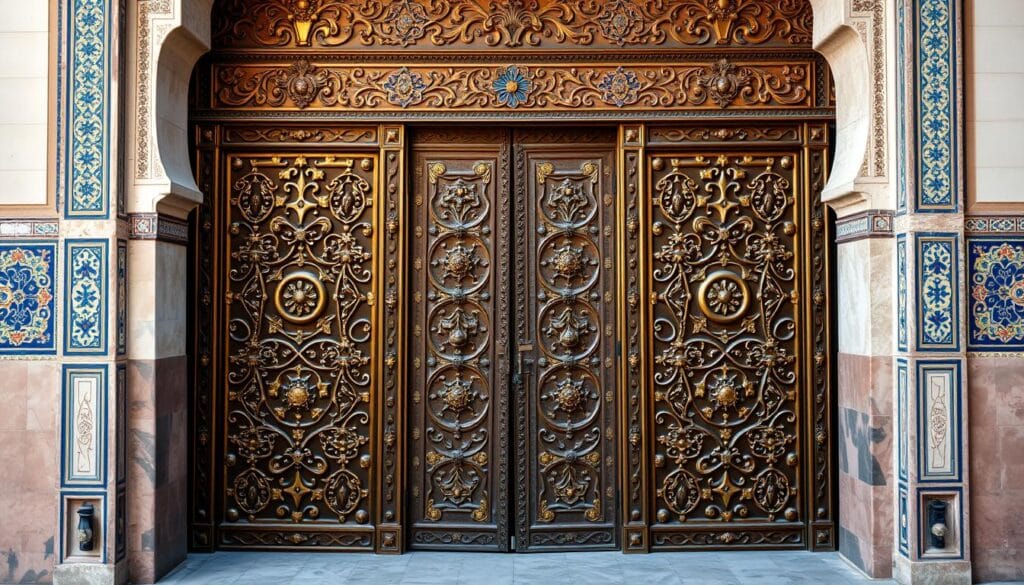
When in Fes, admiring the Royal Palace doors is an experience you won’t soon forget. The Royal Palace of Fes, also known as Dar al-Makhzen, is a massive complex that represents the prestige of the Moroccan monarchy. Although the palace itself is not open to the public, its impressive entrance is definitely worth a visit.
The Magnificent Bronze Doors and Tilework
The Royal Palace’s doors are carved from cedar wood and decorated with intricate geometric patterns, floral motifs, and Arabic calligraphy, making them one of the one best examples of Moroccan craftsmanship in Fes. The elaborate tilework and decorative elements surrounding the doors are a photographer’s dream, capturing the essence of royal Moroccan artistry.
How to Get There and What to Expect
The Royal Palace is located on high ground in the western part of the city, and a quick ride on a red petit taxi from the medina will get you there for about 10-15 dirhams. While the palace interior remains closed to the public, the exterior facade and doors, adorned with magnificent bronze work and tiles, are well worth the trip. You can plan your visit to coincide with the best light for photography, making the most of your time in this part of Fes.
Experience a Traditional Moroccan Riad
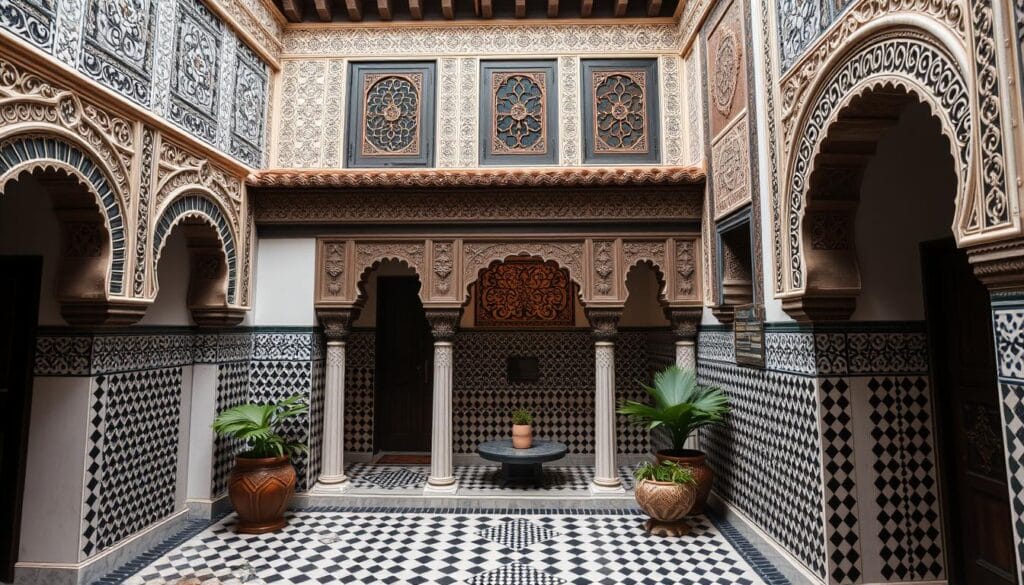
Discover the charm of Fes by staying in a traditional riad, where ancient craftsmanship meets warm hospitality. A riad is a traditional Moroccan house or palace with an interior garden or courtyard, often featuring a fountain or pool as a centerpiece—and it’s not just accommodation, but a cultural experience.
Top Riads to Stay in Fes
Fes is home to numerous riads that offer a range of experiences, from luxury to more affordable yet charming options. Some top recommendations include Riad Fes, Palais Amani, and Dar Seffarine. These riads are known for their intricate Moorish architecture, tiling, and traditional craftsmanship.
What Makes Riads a Cultural Experience
Riads are more than just a place to stay; they are a gateway to understanding Moroccan culture and history. By staying in a riad, you are immersing yourself in centuries of domestic architecture and lifestyle. The intimate, personalized service in riads differs significantly from standard hotel accommodation, enhancing your cultural immersion.
The riads in Fes are distinctive due to their characteristic black-and-white tilework and detailed hand carvings, setting them apart from riads in other Moroccan cities. When choosing a riad, consider factors like location, amenities, and the authenticity of the experience to ensure that your stay is both memorable and enriching.
Enjoy Panoramic Views from Fes Rooftops
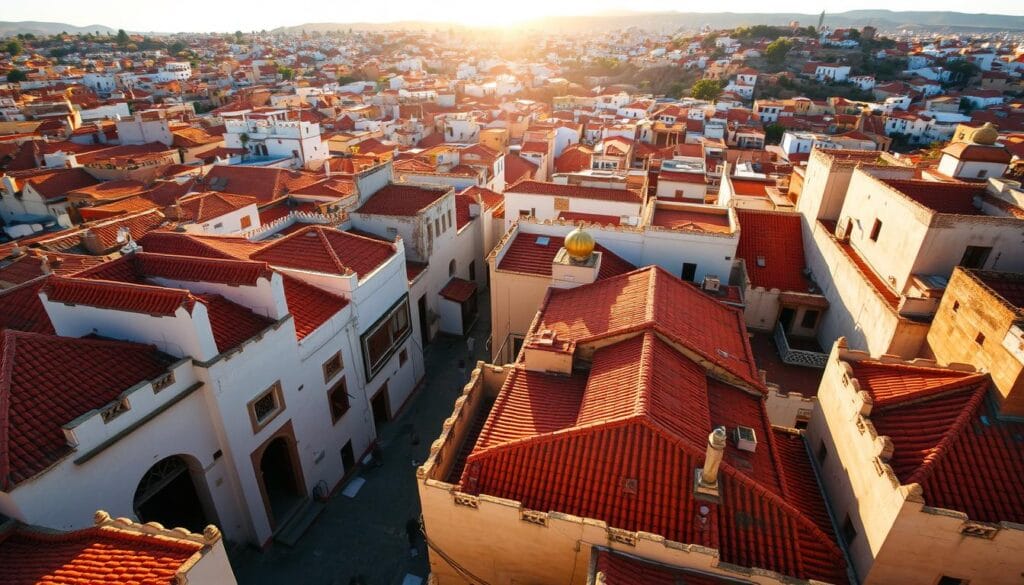
As you wander through the ancient alleys of Fes, the rooftops offer a serene escape with breathtaking views of the city. The city’s landscape, dominated by terracotta-colored buildings, stretches out as far as the eye can see, creating a picturesque panorama that’s especially stunning during the golden hour.
Fes is known for its great rooftops, many of which have expansive and unblocked views of the entire city. The lack of tall buildings means that the rooftops offer a clear view of the medina and surrounding mountains, making them perfect for watching the sunrise or sunset.
Best Rooftop Cafes and Restaurants
For the best rooftop experience, head to establishments like Cafe Clock, Riad Fes, or Dar Seffarine. These spots offer not only stunning views but also delicious Moroccan cuisine and a relaxing atmosphere. Enjoy a leisurely meal or a refreshing drink while taking in the panoramic views of the city.
Perfect Times for Rooftop Views
The times of day can greatly impact your rooftop experience. Sunrise is ideal for photographers seeking golden light, while sunset offers romantic views of the city. Evening is perfect for enjoying the twinkling city lights, making for a magical end to your day. Whether you’re looking for a peaceful morning moment or a romantic dinner under the stars, Fes’ rooftops have something to offer at any time of day.
Things to Do in Fes: Practical Travel Information
As you plan your trip to Fes, understanding the practical aspects of your journey can greatly enhance your experience. To make the most of your time in this historic city, it’s crucial to be informed about the best times to visit, how to navigate its ancient streets, and what day trips are available.
Best Time to Visit Fes
The best time to visit Fes is during the spring (March-May) and fall (September-November), when the temperatures are ideal for exploring. While winter brings fewer tourists, the cooler weather might be a consideration. Summer can be quite hot and busy, so it’s worth planning your trip accordingly. If you’re visiting during Ramadan, be aware that some attractions may have modified hours.
Getting Around the City
Fes is a very walkable town, with most sights and attractions located within the medina, or old town, which is mostly pedestrian-only. For longer distances, such as to and from the airport or train station, you can use a taxi. It’s worth noting that taxis in Fes are generally more agreeable than in other cities like Marrakech, and you might even get them to use the meter.
Day Trips from Fes to Chefchaouen
A day trip from Fes to Chefchaouen is highly recommended. Known as the “Blue Pearl of Morocco,” Chefchaouen is a few hours’ drive away and offers breathtaking views and a unique cultural experience. While it’s a long trip, the scenic beauty and charm of Chefchaouen make it well worth your time. Consider planning this tour to make the most of your days in Morocco.
Plan Your Cultural Journey to Fes with Explore Morocco
Experience the best of Fes with Explore Morocco, your gateway to an unforgettable trip. Our expert local guides provide insider knowledge of Fes’s hidden gems, historical context, and authentic experiences beyond what most tourists see.
We offer a range of Fes tour options, from comprehensive multi-day explorations to focused experiences highlighting the medina, tanneries, or artisan workshops. Our curated cultural experiences include seamless transportation and skip-the-line entrance to popular sites.
Discover how we can arrange special experiences like rooftop dinners with panoramic views, traditional food tastings, or meetings with local artisans. You can also combine your time in Fes with trips to other parts of Morocco, creating a seamless travel journey through the country’s diverse landscapes and cultures.
To start planning your perfect Fes adventure with experts who know the city’s streets, walls, and stories intimately, connect with our team at exploremorocco.net or call us at 0681223860.



